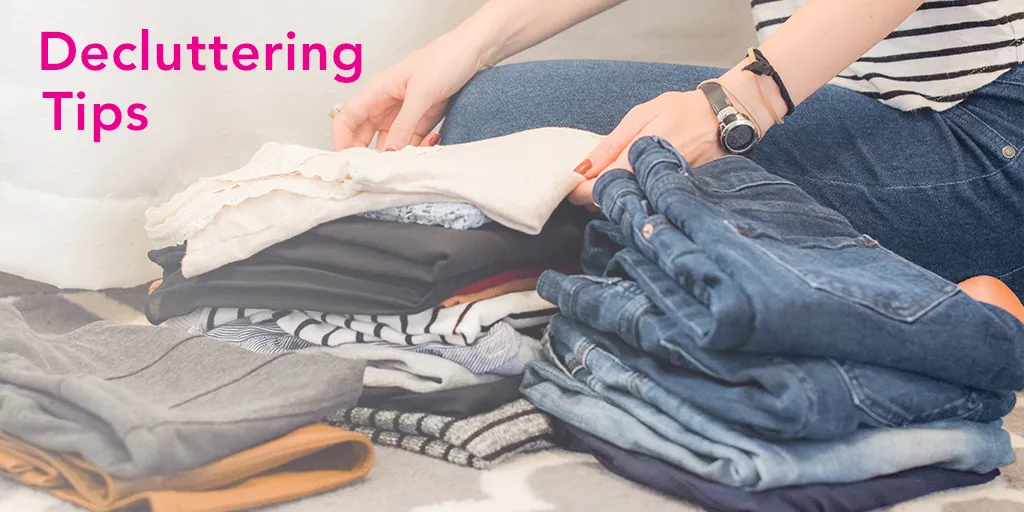Bathroom Cleaning Tips – How to clean a bathroom step by step
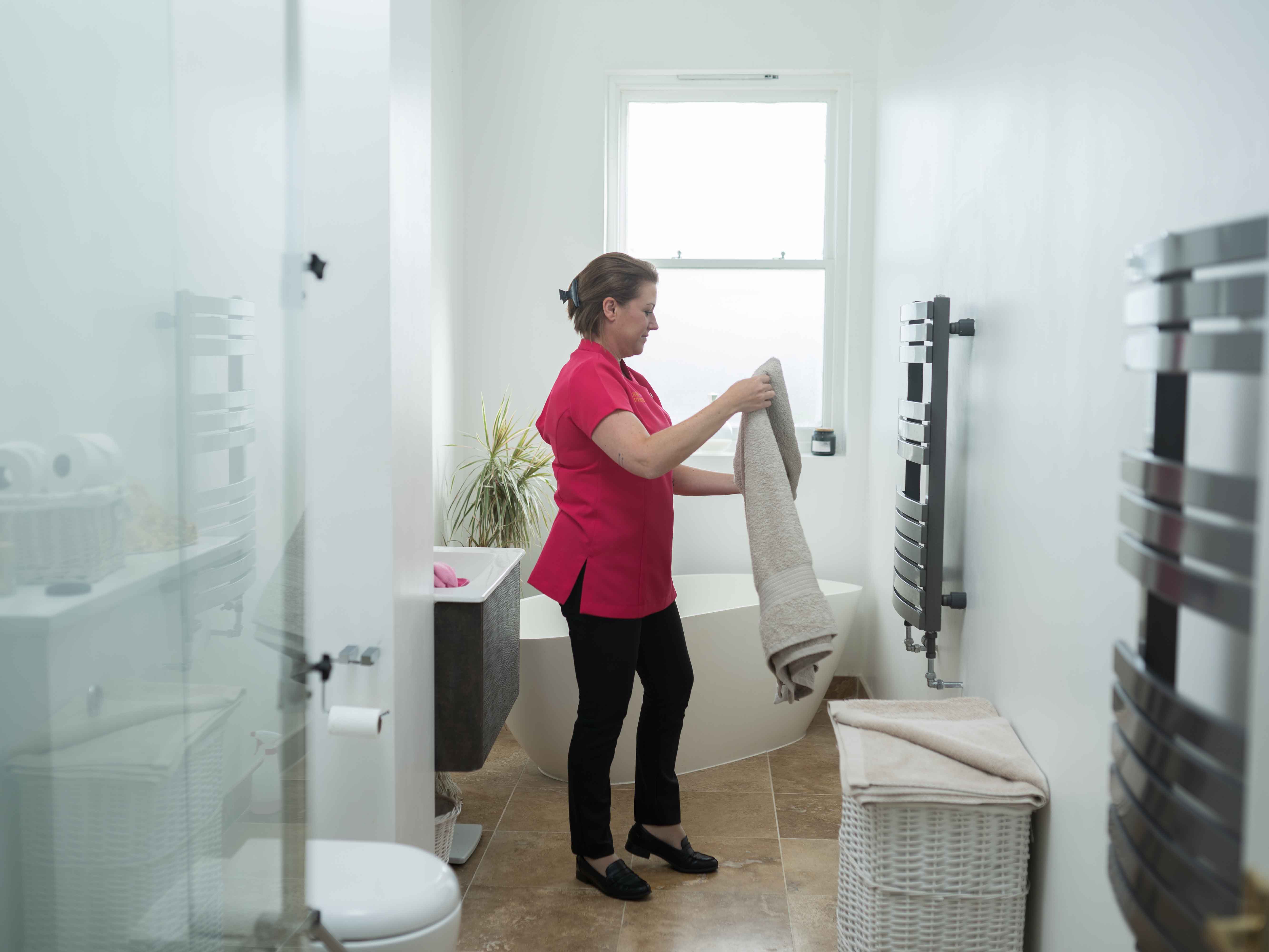
In this start-to-finish guide on how to clean your bathroom we provide step by step bathroom cleaning tips and tricks for a sparkling, refreshed space. Finding the motivation to clean the bathroom can be challenging at times, but add some upbeat music, use products that do most of the work for you, and follow this routine to make the process as easy (and, dare-we-say, fun?) as possible. Your new bathroom cleaning routine begins here!
The frequency of bathroom cleaning varies; daily TLC is needed for some parts of the bathroom, while others can be tackled weekly or monthly. Factors influencing how often your bathroom needs a good clean include household size, guest frequency, and whether you have children.
Take a look at our quick bathroom cleaning checklist and continue reading for more of our best tips and advice.
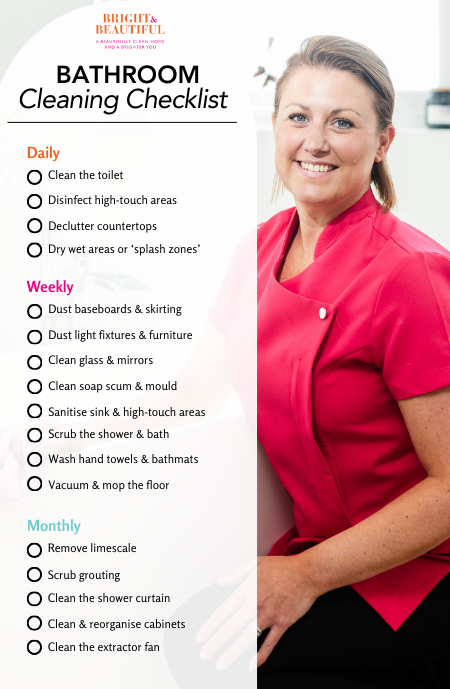
Daily Routine
Clean the toilet
Tackle the less pleasant tasks before they escalate into major endeavours. Give your toilet bowl a scrub each day and wipe down handles daily to maintain a hygienic bathroom.
Top cleaning tip: For an eco-friendly cleaning solution, combine 1/2 cup of white vinegar or lemon with a spoonful of baking soda, and pour this mixture into the toilet bowl. The acidity of vinegar and lemon triggers a reaction with baking soda, eliminating stains or marks that may have accumulated within the bowl.
Disinfect sinks and counters
Take a disinfecting spray or several wipes and use them on high-touch areas or spots that are especially dirty. Doing this daily will take just a minute, but it will keep your bathroom sparkling.
Declutter countertops to minimise dust
Multitask whilst brushing your teeth by returning your cosmetics, hair tools, and toiletries to their designated spot. If you don't have a lot of drawer space, invest in bathroom storage. This decluttering habit will do wonders for your bathroom's appearance and will reduce dust build up.
Dry any wet areas or ‘splash zones’
After you shower, bathe, or wash your hands, use a towel to wipe away water around the sink and on the floors. Hang up damp bathmats and towels to dry. Drying these wet areas as part of your daily routine will help prevent mildew, mould, and damp.
Weekly Once-Over
Dust baseboards and skirting
Every week, use the vacuum with the angled brush attachment to clean your skirting boards. Make sure to focus on corners and tight spots where dust likes to hide. Doing this simple job regularly will make your skirting boards look neat and shiny, making your bathroom look clean and dust free.
Dust light fixtures and furniture
Clean your hanging light fixtures regularly, just like you clean your furniture. Use an extendable microfiber duster or a simple feather duster. Once a week, give your light fixtures a quick wipe down with a damp microfiber cloth, making sure to clean both the inside and outside.
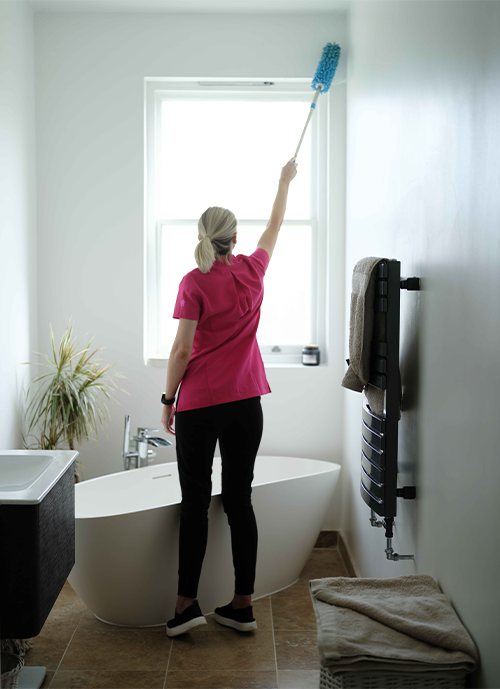
Clean glass and mirrors
Spray a cleaner specially formulated for glass onto the surface. Use a dry, lint-free cloth to wipe the mirror from top to bottom in a circular motion to ensure a streak-free and sparkling finish. Steer clear of paper towels to prevent residue being left behind.
Clean soap scum and mould
To get rid of soap scum, you can make an eco-friendly cleaning solution. Mix 2 cups of white vinegar, 2 cups of warm water, and one teaspoon of dishwashing liquid in a spray bottle. Spray this mixture generously on sinks and surfaces, let it sit for a few minutes, scrub if you need to, and then rinse it away.
This cleaning solution should also combat black mould when left to sit and sink into the surfaces for at least 15 minutes, but you can leave it up to an hour if necessary.
Top cleaning tip: If there's a lot of mould in your bathroom, the best way to get rid of it for good is to stop too much moisture. To do that, you need to make sure the bathroom gets enough fresh air by improving ventilation.
Sanitise sink and high-touch areas
Spritz your sink, faucet handles, and other high-touch areas with your preferred surface cleaner or a DIY vinegar-water solution. Allow it a moment to break down grime, then use a cloth to wipe, clean, and shine. This will not only keep your bathroom sanitary and sparkling, but will regularly remove mess such as toothpaste splashes, makeup stains, and fingerprints.
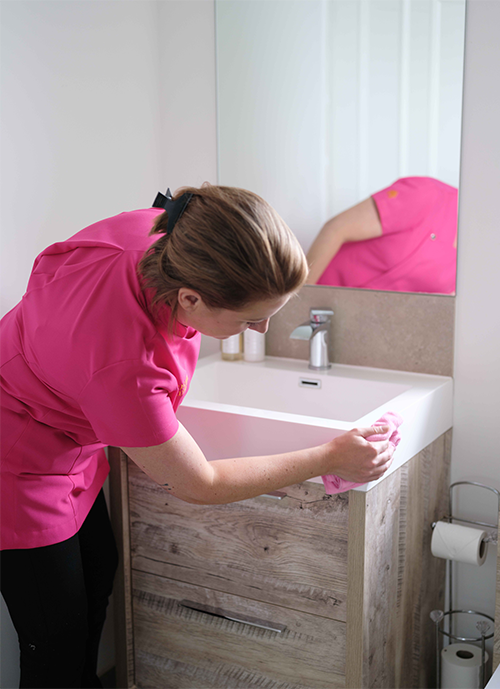
Scrub the shower and bath
Firstly, remove soap or shampoo bottles from the space. Use an eco-friendly cleaner or make your own solution with equal parts vinegar and dish soap in a spray bottle. Starting from the top, spray the solution on bath or shower hardware, walls, and floor. Allow it to sit for a few moments, then rinse with warm water using the showerhead. Use a microfiber cloth to dry surfaces as needed.
Top cleaning tip: If you can’t handle the smell of vinegar, you can achieve the same results with lemon.
Empty and clean bathroom bins
Empty your bathroom bin as-and-when required, but as a rule you should do this at least once weekly. Use this opportunity to clean and the inside of the bin to keep it smelling fresh.
Wash hand towels and bathmats
Hand towels and bathmats should be washed at least once a week. For the softest towels and mats, wash them at a warm temperature and tumble dry on low heat. This ensures a clean that is not too harsh and preserves the fabric's softness.
Top cleaning tip: Put the towels from the bathroom in the tumble dryer for about five minutes to get rid of moisture. This helps extend the freshness of towels, but be careful not to over-dry.
Vacuum and mop the floor
The last step in the weekly cleaning routine should be cleaning the bathroom floor. Save this until last as dust, hair, and cleaning residue have likely distributed across the floor. You can use a vacuum on most floors to eliminate loose debris, followed by mopping with soapy water.
Monthly Deep Clean
Remove limescale
In bathrooms with hard water, it's common to see limescale buildup. To fix it, use white vinegar or lemon juice on the area with a cloth or sponge. Leave for 15 minutes, then scrub with a brush and rinse with warm water. You can also use an eco-friendly commercial limescale remover product.
Top cleaning tip: You can use a pumice stone, which is a rough rock, to scrub off limescale. Just be careful not to scratch the surface.
Scrub grouting
To keep your bathroom looking like new, you should scrub grouting each month before mildew or discolouration has a chance to build up. Revitalise discoloured grout and sealant by scrubbing with an old toothbrush.
Top cleaning tip: Use a mixture of two parts Baking Soda and one part Hydrogen Peroxide for a foam that gradually brightens your tiles and grout in minutes. You can leave the mixture for up to an hour for optimum results.
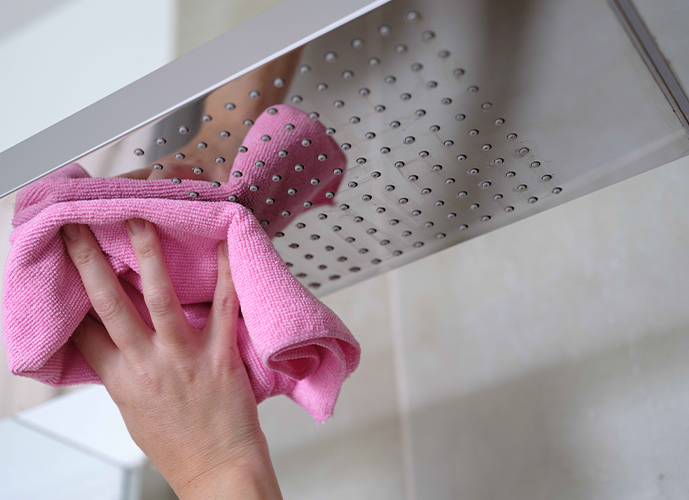
Descale the shower head
Fill a bag with an eco-friendly mixture of distilled white vinegar and water, reaching about one-third of the way up. Secure it to your showerhead using a rubber band and let it sit for a few hours or overnight. Afterward, remove the bag, use a brush to scrub away any remaining dirt, and finally, run water through the showerhead.
Top cleaning tip: Use distilled white vinegar, as it’s eco-friendly it adds a sustainable touch to your cleaning routine.
Clean the shower curtain
Both plastic and fabric shower curtains are prone to mould and bacteria. Combat this issue by washing them in the washing machine once a month.
Clean and reorganise cabinets
Easily clean your cabinets by mixing a bit of mild dish soap with warm water. Grab a clean sponge, dampen it, then wipe down the cabinets inside and out. Be careful not to use too much water, and always dry with a towel. Baking soda is another great option for cleaning your cabinets. Make a paste by mixing it with a bit of water, then use a soft cloth to clean your cabinets. It's simple, but effective!
Try these cabinet organisation tricks:
- Categorise items based on how often you use them.
- Use drinking glasses as holders. These can be plastic if you have children.
- Group miscellaneous items on open shelves using boxes and baskets.
- Hang tools like hairdryers inside cabinets by adding a hook.
- Keep countertops organised by using trays.
- Display extra towels for easy access.
Clean the extractor fan
The last step in your monthly cleaning routine is the extractor fan. Cleaning your extractor fan is easy and won't take much time. This helps it work well in reducing moisture and odours, preventing dampness and mould.
Before you begin cleaning, make sure the fan is turned off. Use a gentle all-purpose cleaner mixed with warm water to clean the vent cover. If you can, take off the cover and soak it in the sink. Dry it off and put it back. Then, use a slightly wet microfiber cloth to wipe dust off the blades and motor. You can also use a vacuum with a narrow attachment to suck up dust. Clean the housing that holds the fan too. Once everything is dry and dust-free, put the fan back in place.
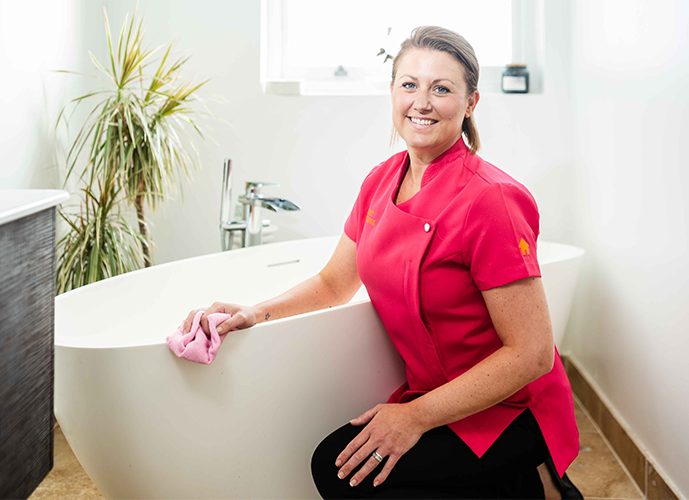
Get in Contact
Need assistance in maintaining a sparkling clean bathroom? We can help! Our dedicated Housekeeping Teams use eco-friendly products to treat your bathroom with care. Reach out to us to discuss the right cleaning service for your needs.

